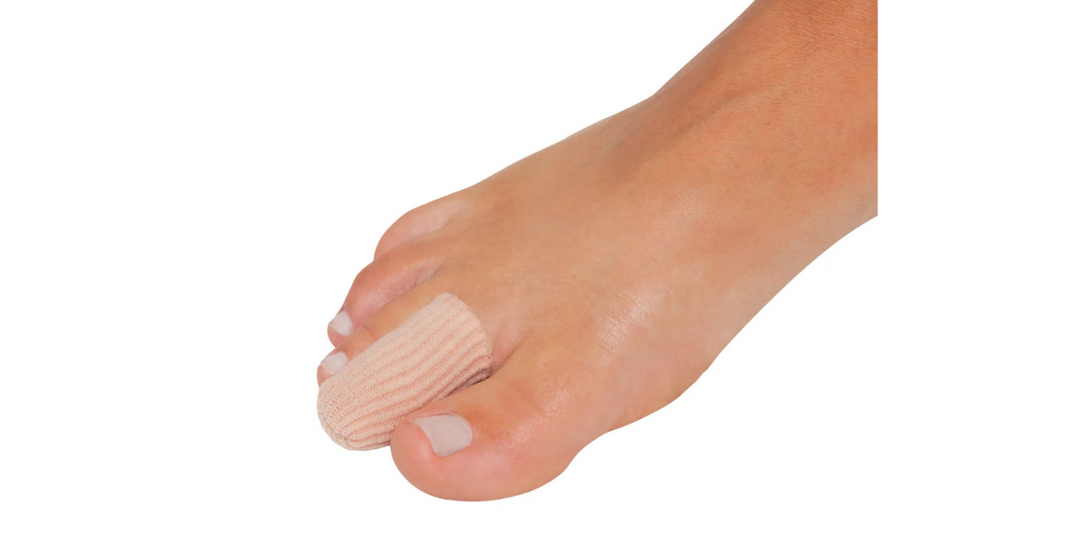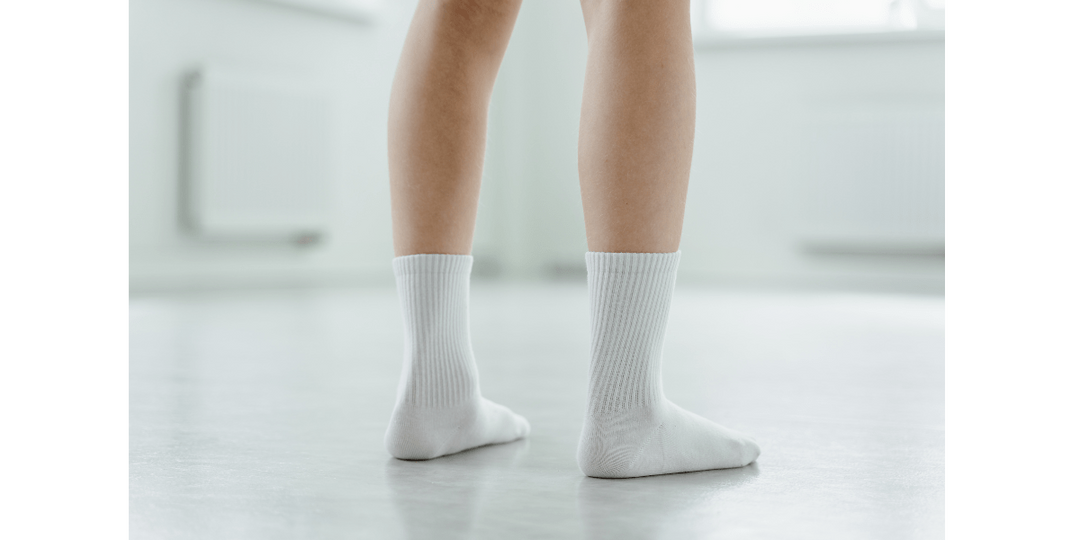How does diabetes affect feet?
How does diabetes affect feet?
Having diabetes may increase your risk of developing diabetes related complications that include nerve damage called ‘peripheral neuropathy’ or poor circulation in your feet called ‘peripheral vascular disease’. Nerve damage may affect how you feel pressure or pain and may lead to numbness in your toes or feet. Changes to your circulation may delay your ability to heal any cuts or sores. This may also increase your risk of developing ulcers that may even lead to amputations.
What are the signs and symptoms?
Feet are often the first place to show such diabetic-related symptoms. This is why it is so important to pay attention to any such changes in your feet if you have diabetes. Do you have cold feet, numbness, a sharp pain in your leg after walking, pins and needles, or any changes in foot colour, such as redder skin? Also look for any nail changes, corns, calluses, cracked or dry skin. Seek urgent care if you have any signs of an infection, or your skin starts to breakdown – such as via an ulcer or a crack in your heels. Or if you have a new pain, swelling or redness in this area. This is even more important if you have already been diagnosed with nerve damage.
What can you do?
• Make sure your feet are clean and dry, including drying between your toes • Moisturise your feet every day
At The Foot Care Shop we stock a range of Creams that are safe to use on diabetic feet. To see our collection of diabetic creams click the link below
• Check your feet every day for changes
• Keep your toenails trimmed
• See your podiatrist regularly – and if you notice any changes to your feet, it is strongly recommended that you seek professional advice from a podiatrist.
How else can you look after your feet?
To prevent future foot problems, try and keep your blood glucose levels in your target range, avoid smoking, and keep physically active. Also, keep up to date with your annual cycle of care visits. By taking the right steps in looking after your diabetes, these complications can be delayed or prevented altogether.
At The Fooot Care Shop we stock a range of products that have been approved for the care of diabetic feet. Shop our diabtic foot collection here
Find a podiatrist near you head to www.podiatry.org.au and select Find a Podiatrist to find a podiatrist near you.
Diabetic Foot Care: A Podiatrist’s Perspective
As a podiatrist, diabetic foot care is one of the most critical aspects of my practice. Diabetes affects the feet in specific ways that make regular, proactive foot care essential for long-term health. Diabetic patients face unique challenges, such as reduced blood flow (peripheral arterial disease), decreased sensation in the feet (peripheral neuropathy), and a higher susceptibility to infections and ulcers. Without careful monitoring and treatment, these issues can lead to severe complications, including foot ulcers, infections, and, in the most serious cases, amputation.
By taking a preventive approach to foot care, diabetic patients can greatly reduce the risk of these complications and maintain healthier feet. Here are some key components of diabetic foot care that I emphasize to patients:
Essential Diabetic Foot Care Tips
Daily Self-Examinations
Patients should inspect their feet daily, looking for cuts, blisters, redness, or any other irregularities. Because reduced sensation can make it difficult to feel small injuries, visual inspections are essential. Using a mirror can help, and if mobility is limited, caregivers can assist with these checks.
Proper Hygiene
Regularly washing feet with warm (not hot) water and mild soap is important, as is thoroughly drying between the toes. Moisture trapped between the toes can create an environment for fungal infections.
After washing, applying a moisturising lotion (but not between the toes) helps prevent dry, cracked skin, which can also lead to infections. You can also use a product such as Diabetic Defense foot wash
Wear Appropriate Footwear & Socks
Diabetic patients should wear well-fitted shoes and socks that protect the feet from injury. I recommend shoes with plenty of toe room and soft interiors to avoid pressure points and abrasions. Specialised diabetic shoes and inserts can help relieve pressure and prevent ulcer formation.
Blood Sugar Management
Elevated blood glucose levels can impair wound healing and increase the risk of infection. For patients with diabetes, keeping blood sugar under control supports both overall health and specific foot health.
Regular Foot Exams with a Podiatrist
A podiatrist should conduct routine foot exams to monitor for changes, perform professional nail and callus care, and address any issues before they become serious. In some cases, additional testing, such as vascular assessments or nerve function tests, may be necessary. Everyone with diabetes should see a podiatrist for a thorough diabetic foot assessment. Depending on the examination results your podiatrist will advise you on how often care is required.
Common Diabetic Foot Concerns
Foot Ulcers
Ulcers are open sores that develop from pressure, friction, or minor trauma. They require prompt attention and regular care to prevent infection. A podiatrist can provide appropriate dressings and recommend offloading techniques, such as special footwear, to reduce pressure.
Peripheral Neuropathy
Neuropathy, or nerve damage, reduces sensation in the feet, which can make it difficult for patients to detect cuts or injuries. I often advise patients to be extra cautious and mindful about monitoring their feet and avoiding extremes of temperature, as they may not feel discomfort from burns or frostbite.
Charcot Foot
Charcot foot is a condition involving bone weakening that can occur in diabetic patients with neuropathy. It causes the foot to collapse, leading to deformities. Early detection is vital for treatment and preventing further complications. Wearing custom orthotics and avoiding high-impact activities are key recommendations for patients at risk.
Infections
Infections can quickly worsen in diabetic patients due to impaired immune response. Even a small cut or blister can become problematic if not promptly treated. For diabetic patients, I often emphasize the importance of seeking care at the first sign of infection, including redness, swelling, or drainage.
Frequently Asked Questions (FAQs)
1. How often should I see a podiatrist for diabetic foot care?
I recommend most diabetic patients visit a podiatrist at least every 3-4 months, although patients with higher risk factors, like neuropathy or a history of ulcers, may need more frequent visits.
2. How can I prevent foot ulcers?
Daily foot checks, proper footwear, blood sugar control, and avoiding barefoot walking are all crucial preventive steps. Additionally, regular visits to a podiatrist can help catch any potential issues before they escalate.
3. What should I do if I find a cut or blister?
Clean the area gently with soap and water, apply an antiseptic such as betadiene and cover it with a sterile bandage. Monitor it closely, and if it doesn’t begin to heal within a day or two, or if signs of infection appear (redness, warmth, swelling), seek prompt care from your podiatrist.
4. Can diabetic shoes make a difference?
Diabetic shoes are designed to reduce pressure points and prevent friction, which can protect against sores and ulcers. I often recommend diabetic footwear, especially for patients with neuropathy or a history of foot ulcers.
Managing diabetic foot health requires a proactive approach, including both daily self-care and regular professional care. Through consistent monitoring and careful attention, patients can minimise risks and maintain healthier feet, preventing complications and preserving mobility for the long term.









Leave a comment